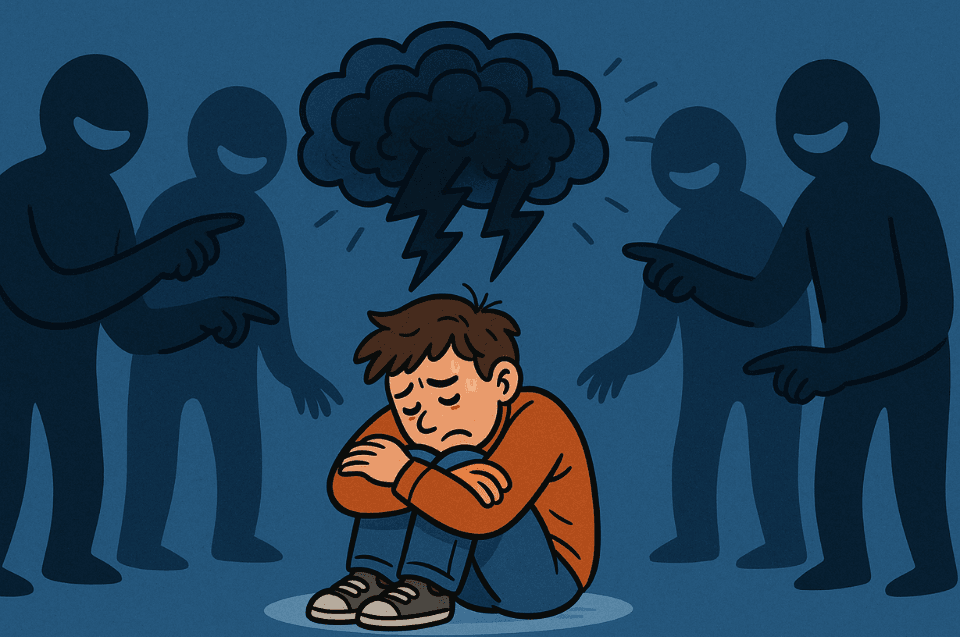Panic disorder is a mental health condition characterized by unexpected and recurrent episodes of intense fear or discomfort, accompanied by powerful physical and emotional symptoms. These attacks often arise suddenly, even when there is no real danger or threatening situation, and can severely impact the person’s daily life and well-being.
Although relatively common, panic disorder is still surrounded by misinformation, fear, and stigma. Many people suffer in silence for years before seeking help, highlighting the importance of raising awareness and spreading accurate information about the condition.
Causes
The exact causes of panic disorder are not fully understood, but a combination of genetic, biological, psychological, and environmental factors is believed to play a role. Key associated factors include:
Genetic predisposition: Individuals with a family history of anxiety disorders are at higher risk.
Chemical imbalances in the brain, especially involving neurotransmitters like serotonin and norepinephrine.
Traumatic or stressful experiences, such as abuse, loss, accidents, or sudden life changes.
Anxious personality traits, including perfectionism and excessive self-demand.
Symptoms
The hallmark of panic disorder is the panic attack — a sudden and intense episode of fear. Each attack typically lasts from 10 to 30 minutes, though its aftereffects can linger for hours. Common symptoms during an episode include:
Heart palpitations or rapid heartbeat
Shortness of breath or a feeling of choking
Dizziness, vertigo, or faintness
Excessive sweating or chills
Trembling or shaking
Chest pain or discomfort
Nausea or abdominal distress
Tingling sensations or numbness
Feeling detached from reality (depersonalization or derealization)
An overwhelming fear of dying, losing control, or “going crazy”
Between attacks, individuals often live in anticipatory anxiety, constantly fearing the next episode. This can lead to significant emotional distress and social withdrawal.
Diagnosis
Diagnosis of panic disorder is clinical and typically performed by a physician or psychiatrist, based on an assessment of the person’s symptoms and attack frequency. According to the DSM-5 (Diagnostic and Statistical Manual of Mental Disorders), the criteria include:
Recurrent and unexpected panic attacks
At least one attack followed by a month or more of persistent concern about having more attacks or their consequences
Symptoms that cannot be explained by another medical condition, substance use, or another mental disorder
Lab tests and physical exams may be used to rule out underlying conditions (like cardiac or hormonal issues), but they do not confirm the diagnosis.
Treatment
Panic disorder is treatable, and many people can return to a normal, fulfilling life with proper care. The most effective approach usually combines psychotherapy, medication, and lifestyle changes:
Psychotherapy: Cognitive-behavioral therapy (CBT) is considered the gold standard. It helps individuals identify and challenge distorted thinking patterns, manage symptoms, and confront feared situations gradually.
Medication: Antidepressants (especially selective serotonin reuptake inhibitors, SSRIs) and anxiolytics may be prescribed, particularly for moderate to severe cases. Medication use should always be personalized and monitored by a healthcare provider.
Lifestyle modifications: Regular exercise, a balanced diet, good sleep hygiene, breathing techniques, relaxation exercises, and limiting caffeine and alcohol intake are all recommended.
Prevention
There is no guaranteed way to prevent panic disorder, but maintaining overall mental and physical health can help reduce risk. Helpful strategies include:
Seeking psychological support during stressful life events
Learning anxiety management techniques
Prioritizing sleep, nutrition, and physical activity
Avoiding excessive consumption of alcohol, caffeine, and other substances
Consulting a professional when early signs of anxiety arise
Key Facts
Panic disorder affects about 2–3% of the global population, and is more common in women and young adults, typically starting between ages 20 and 35.
Some people begin to avoid public places, elevators, transportation, or travel for fear of having a panic attack. This can develop into agoraphobia.
Many individuals go to the emergency room during their first panic attack, believing they are having a heart attack due to the intensity of physical symptoms.
With proper treatment, full remission of symptoms is possible. However, adherence to therapy and long-term follow-up are essential.
Myths and Facts
“Panic attacks are just drama.” Myth! Panic disorder is a real, medically recognized condition with well-documented neurological and psychological roots.
“People with panic attacks go crazy.” Myth. Although the feeling of losing control is intense, panic attacks do not cause psychosis or madness.
“Medication is addictive.” Myth. Antidepressants used to treat panic disorder are not addictive. Some anxiolytics require careful use, but they are not inherently addictive if taken under medical supervision.
“Panic attacks are just caused by stress.” Myth. While stress can be a trigger, the disorder is rooted in deeper causes, including genetic predisposition and neurochemical changes.
Conclusion
Panic disorder can be profoundly disabling, but fortunately, effective treatments and support systems are available. Accurate information is a critical first step in fighting stigma and ensuring that more people receive the care they need. Seeking professional help at the first signs of intense anxiety or frequent attacks is essential for improving well-being and quality of life.



